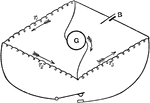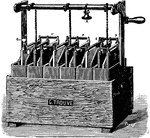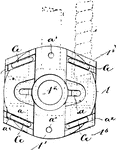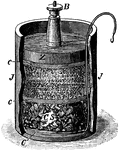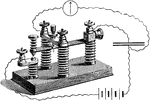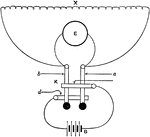Clipart tagged: ‘Electrical’

Arrangement of Battery, Resistance, and Galvanometer
"Represents in diagram the arrangement of the battery, resistance, and galvanometer. There are two keys,…
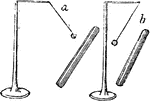
Electrical Attraction
"If an excited substance be brought near a ball made of pith, or cork, suspended by a silk thread, the…

Battery Resistance
An illustration of the assisting and opposing method used to measure battery resistance.
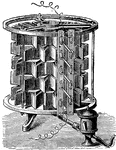
Thermal Battery
An illustration of Clamond's thermal battery; a thermal battery refers to the the electrolyte being…
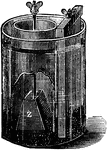
Fuller Bichromate
The cell was set up in a glass, or glazed earthenware, pot. This contained the chromic acid solution,…
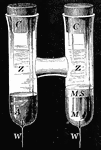
Clark's Standard Cell
In semiconductor design, standard cell methodology is a method of designing Application Specific Integrated…
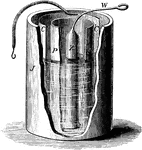
Daniell Cell
The Daniell cell (var. sp. Daniel cell), also called the gravity cell or crowfoot cell was invented…

Fleming's Standard Cell
In semiconductor design, standard cell methodology is a method of designing Application Specific Integrated…

Leclanché Cell
Georges Leclanché invented and patented in 1866 his battery, the Leclanché cell. It contained…

Electrical Diagram
Electrical diagram for Gray & Davis starting and lighting installation on the Peerless, Model 56.

Electrical Helix
"A copper wire coiled, by winding it around a piece of wood. The turns of the wire should be close together…
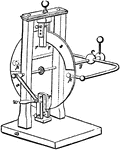
Electrical Machine
"The electrical machine most usually employed consists of a large circular plate of glass, mounted upon…
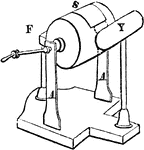
Electrical Machine
"A form of an electrical machine. S being the glass cylinder turning on an axis, Y the conductor, F…
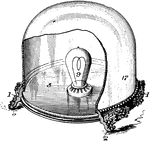
Early Design Electrolier
A fixture, usually pendent from the ceiling, for holding electric lamps. The word is analogous to chandelier,…

Quadrant Electrometer
An illustration of a quadrant electrometer. An electrometer is an electrical instrument for measuring…

Differential Galvanometer
"The galvanometer consists of two distinct coils of wire, each having the same resistance, and having…

Idiostatic Gauge
An illustration of an idiostatic gauge which determines the charge in the condenser.

Electrostatic Induction
"Suspend two egg-shell conductors as shown. Be sure that the shells are in contact. Bring an electrified…
!["The Metre Bridge is employed - a piece of apparatus which is illustrated [here]. It consists of a wooden base, upon the upper face of which is mounted a metallic rectangle; three sides of this rectangle are formed by a broad substantial copper band - having a negligible resistance - and the fourth consists of a platinum silver wire w w joining the copper blocks P and p. This wire is exactly one meter long, and over it slides a key K, which when depressed makes contact by means of a platinum knife-edge with the wire; the exact point on the wire at which this contact is made is indicated by an arrow-head on the key, which slides against a scale, as shown." (Britannica, 1891)](https://etc.usf.edu/clipart/61300/61365/61365_metre-bridge_mth.gif)
Metre Bridge
"The Metre Bridge is employed - a piece of apparatus which is illustrated [here]. It consists of a wooden…
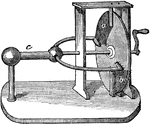
Plate Electrical Machine
"When large quantities of electrical fluid are wanted for experiment, or for other purposes, it is procured…
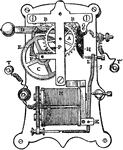
Electrical Remontoire
An electrical remontoire can be either a gravity or spring type. In it, the weight or spring is rewound…

Attachment Terminal
The point at which a conductor from an electrical component, device or network comes to an end and provides…
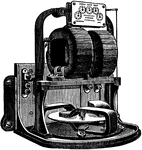
Wattmeter
"Instrument designed to measure both the rate at which the electrical energy is delivered and the time…

